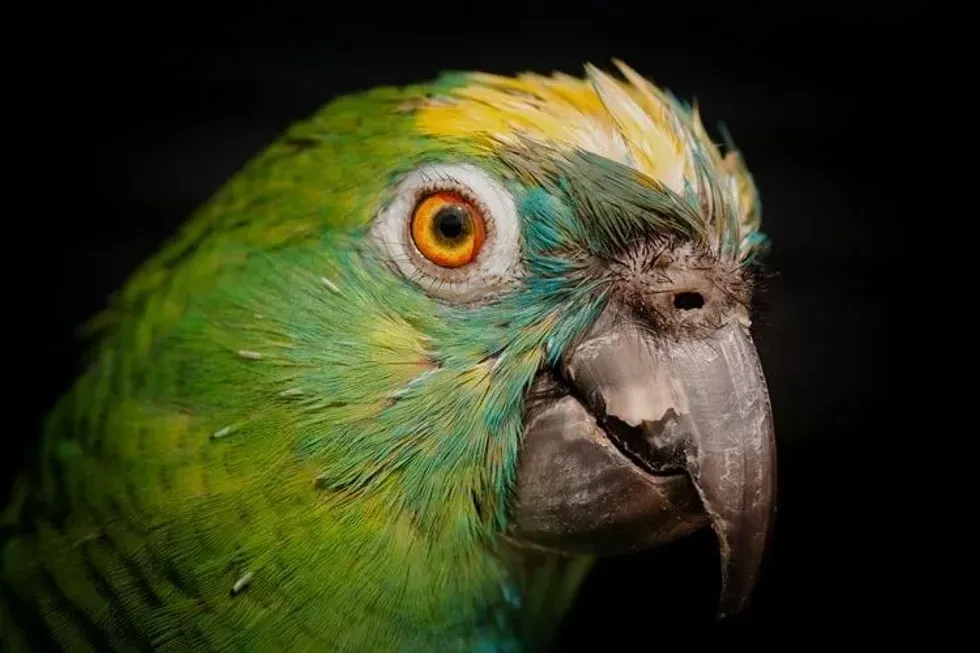A great green macaw, most commonly known as Buffon’s macaw is a friendly parrot and lives well in captivity. However, these great green macaws are facing the threat of extinction and are not commonly found as pets.
Green macaw great parrot can be found only in a few countries in Latin America including Costa Rica. These birds are usually green in color and have a reddish colored forehead and pale blue colored lower back rump and upper tail feathers.
Mostly, their tails have a brown-red tip with some pale clue color as well. The beak of a great green macaw is adapted to crack open nuts from almond tree around swamps.
Great green macaw is an endangered species and is facing the threat of extinction due to loss of habitat. If you are looking to get a great green macaw, read some of the interesting facts listed below. After this, you may also like to look at red bird of paradise facts and barn owl facts.
Great Green Macaw Interesting Facts
What type of animal is a Great Green Macaw?
A great green macaw is a large-sized parrot, often regarded as monogamous, as they form a strong bond with their females.
What class of animal does a Great Green Macaw belong to?
This great green macaw belongs to the class of Aves.
How many Great Green Macaws are there in the world?
As per current reports, there are around 2,500 to 3,000 green macaws left in the world.
Where does a Great Green Macaw live?
The great green macaw are most likely to be found living in the tropical forests.
What is a Great Green Macaw's habitat?
A macaw usually lives in a wet and humid lowland, a deciduous forests.
Who do Great Green Macaws live with?
Green macaws usually live in tropical forests, their favorite climate, where they can fly around with the flock and search for food.
How long does a Great Green Macaw live?
A macaw ara ambiguus is known for its eternal age and can live up to 80 years and sometimes even above.
How do they reproduce?
A macaw ara ambiguus is known to be monogamous having, forming strong bonds with their female counterparts. The season of breeding takes place in December that lasts till June in Costa Rica. Their process of reproduction takes place in the nests all the way up in the trunk.
What is their conservation status?
A great green macaw comes under the endangered category.
Great Green Macaw Fun facts
What do Great Green Macaws look like?
A great green macaw is considered to be the largest parrot in the wild. Mostly, a green macaw is green in color with a reddish forehead. A green macaw has a pale blue bottom and upper tail feathers.
Its tail appears to be brownish red and pale blue. The bare facial skin is layered with dark red-tipped feathers. A baby green macaw has grey eyes and has shorter tail feathers of yellow color.
How cute are they?
Great green macaws are adorable parrots with their large size and appearance.
How do they communicate?
Great green macaws usually fly in flocks while making very loud raucous sounds that are even audible from a distance.
How big is a Great Green Macaw?
These great green macaws are comparatively bigger than most normal-sized parrots. Their height extends to 85 - 90 cm in length making them visible even from a distance.
How fast can a Great Green Macaw fly?
Macaws are extremely fast and can reach a speed of up to 55 kph.
How much does a Great Green Macaw weigh?
A great green macaw weighs around 1 kg and a baby macaw weighs around 23 g.
What are their male and female names of the species?
A male macaw great green is known as cock and a female macaw great green is known as hen and has a capacity to lay two to three eggs.
What would you call a baby Great Green Macaw?
A baby macaw is simply known as a chick that weighs around 23 g during its birth.
What do they eat?
They mainly feed on seeds, nuts, bark, flowers, and such things.
Are they loud?
Yes, a great green macaw is extremely loud. It can be heard from open areas as it screeches and makes noise.
Would they make a good pet?
A green macaw can’t live in an enclosed space as it needs a spacious area to fly around. It also needs huge trees for nesting purposes. Although, green macaws are usually friendly and they would make adorable pets.
Did you know...
A great green macaw, upon waking up from sleep, calls its partners with a loud screech to know their whereabouts. After gathering in numbers, they go out flying together.
Is The Great Green Macaw Endangered?
The great green macaws are currently endangered. Their population is somewhere between 2,500 to 3,700 worldwide. The IUCN red list has noted that the great green macaw are an endangered species. Even today, their numbers are decreasing.
Great Green Macaw VS. Military Macaw
A great green macaw is visually different from a military macaw by plumage color, size, and eye color. A green macaw is larger than most macaws. It has long feather tails and it has a green texture that is a bit different from the military macaw.
Here at Kidadl, we have carefully created lots of interesting family-friendly animal facts for everyone to discover! Learn more about some other birds including secretary bird, or bee hummingbird.
You can even occupy yourself at home by drawing one on our great green macaw coloring pages.









